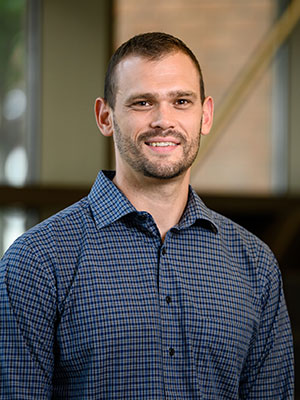About
Dr. Reed Gurchiek is an Assistant Professor in the Bioengineering Department at Clemson University. His lab combines mobile and wearable technologies with musculoskeletal modeling and simulation for biomechanics and rehabilitation research. He develops algorithms for remote human movement analysis and uses them to monitor intervention efficacy and disease progression in both musculoskeletal and neurological disorders. Dr. Gurchiek uses modeling and simulation to estimate muscle and joint loads non-invasively and discover movement patterns that reduce the likelihood of injury. His research aims to improve mobility across the lifespan by investigating the root causes of impairment and advancing new technologies for optimizing recovery. He was a Wu Tsai Human Performance Alliance Postdoctoral Fellow at Stanford University where his work used new techniques in computer vision and musculoskeletal simulation to investigate mechanisms of hamstring strain injuries. He completed his PhD in Mechanical Engineering from the University of Vermont where his work developed algorithms for remote gait analysis of patients following knee surgery. He holds MS degrees in Engineering Physics and Exercise Science from Appalachian State University and a BS degree in Exercise Science from Cumberland University.
How their research is transforming health care
Many people suffer from reduced mobility due to musculoskeletal dysfunction. Dr. Gurchiek's research mission is to affect positive change in people's lives by improving rehabilitative interventions and assessment tools. Dr. Gurchiek approaches this problem generally by investigating the neuromechanical origins of injury and mobility impairments, exercise-induced muscle adaptation and subsequent effects on movement, and intervention efficacy. Novel biomechanical approaches are needed to facilitate new insight in these areas outside the scope of traditional methodologies. Dr. Gurchiek aims to deliver on this vision by combining remote human movement analysis via wearable and mobile technologies with new techniques in computational modeling and simulation. Remote gait analysis via wearable sensing presents advantages over traditional technologies in terms of scalability, ecological validity, and health insight. For example, the technology is low-cost and provides a more frequent snapshot of human movement without Hawthorne effects. Moreover, it provides information that is otherwise unmeasurable including physical activity and cumulative exposure to load. His research is advancing the current state-of-the-art, developing techniques that provide a more comprehensive analysis of muscle and joint mechanics during gait. Not only will this improve how rehabilitation is monitored and impairment is identified in practice, it will enable new scientific investigations of how habitual exposure to load and movement patterns influence disease etiology and progression.
Health research keywords
Biomechanics of human movement, Musculoskeletal modeling and simulation, Remote gait analysis, Rehabilitation, Musculoskeletal injuries

